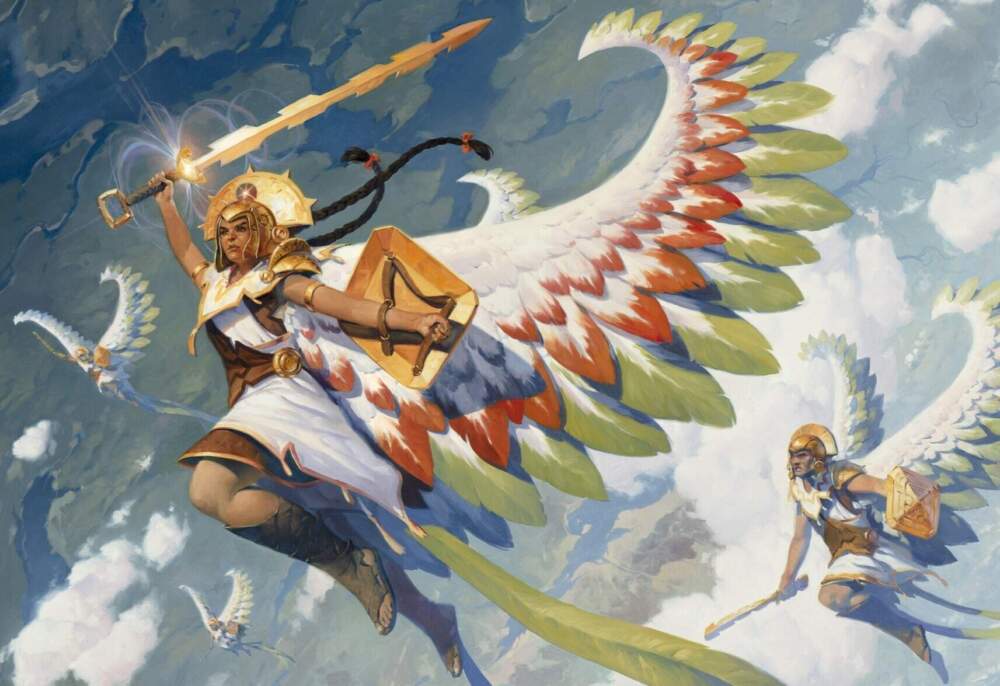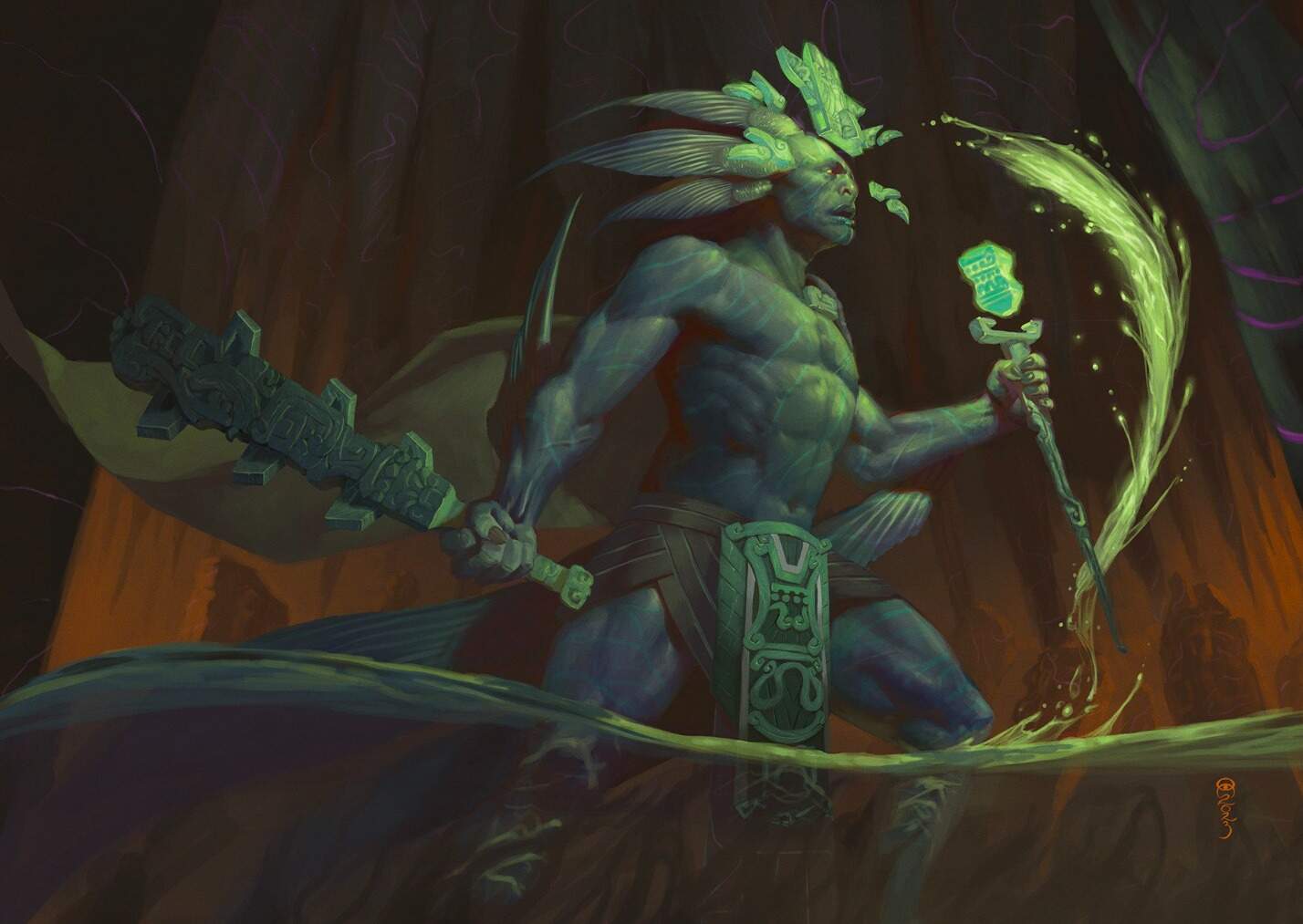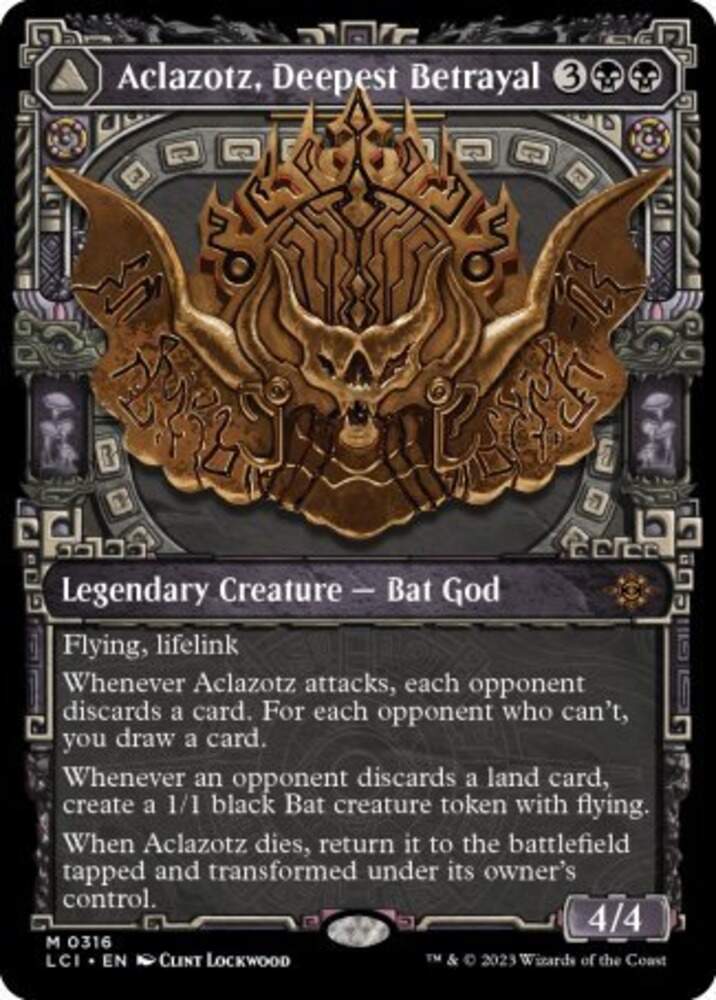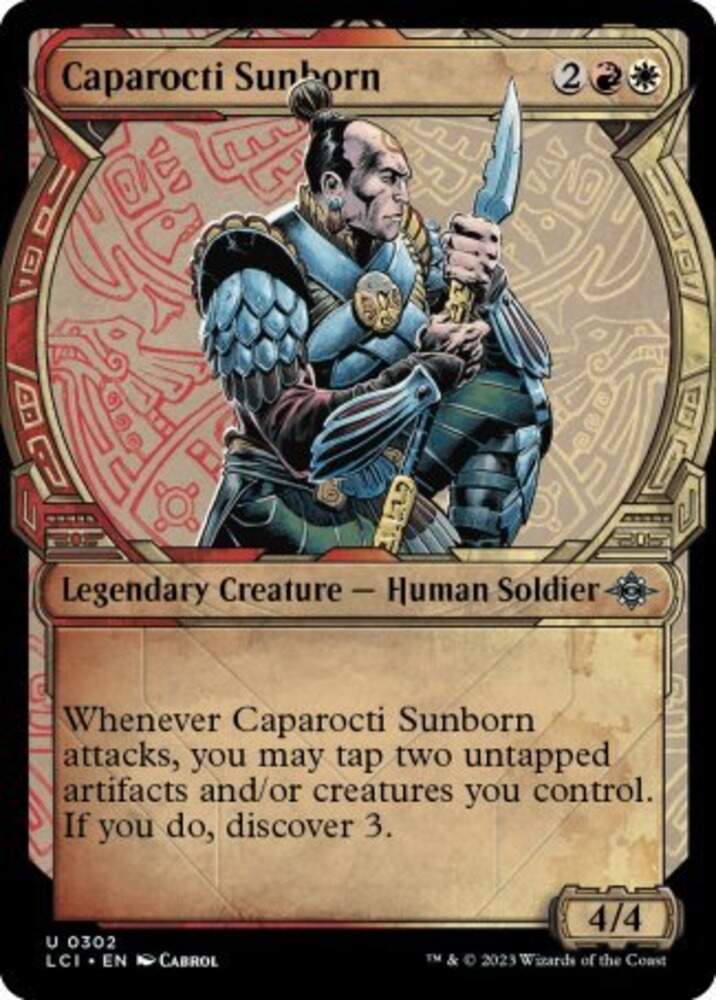Advertisement
'Lost Caverns of Ixalan' centers Aztec, Olmec, Mayan culture in huge new 'Magic: the Gathering' set
Resume
The world’s oldest trading card game, “Magic: The Gathering,” returns this week to a world drawn from real Mesoamerican cultures.
Unlike the usual fantasy fare of elves and dragons, the hundreds of cards in “Lost Caverns of Ixalan” burst with goblin pirates, vampire conquistadors, Mayan-style merfolk and Aztec-inspired warriors riding dinosaurs.
And while the game is designed for whimsical fun, it’s also resonating with players.
“It was really nice to see a full-blown American game with a high budget with people who look like me and represent my culture,” says LGBTQ activist and artist Laya Monarez. “It made me think like if I were European, this would be what it’d be like to see King Arthur for the first time.”
“Lost Caverns” creative leads also saw it as a chance to represent their cultures in a staple fantasy franchise.
“We had a lot of artists from Latin America and we knew this was going to be probably the largest indigenous and Latino American-themed release in the year in gaming,” says set art director Ovidio Cartagena. “So I was just very happy that it inspired people in all the right ways.”
Cartagena, who first contributed card art to the game before its maker, Wizards of the Coast, hired him full-time, even referenced his native Guatemala in a card he illustrated for “Lost Caverns.”

“Growing up, on my commute, I would see Maya pyramids,” says Cartagena, “I would see a sculpture of Tecún Umán all the time, this great Quiché prince. I wanted to put a piece of that in the card that I illustrated, and many other artists did this with their own interests.”

Nods like these have not gone unnoticed. “There’s a god character this time. He’s very bat-themed,” says Monarez. “Bats were a very big part of the Mayan culture, and a lot of people worshiped bats. Just that specificity — I really admire it. I think somebody really knew what they were doing.”
Cartagena confirmed that designers did indeed base this bat card, “Aclozotz,” on the Mayan god, Camazotz. He even initially pitched the set to his employers as an homage to the ancient Mayan text, the Popol Vuh. Its underworld mythology informs “Lost Caverns of Ixalan”’s subterranean setting, but it’s also reflected in its characters.
“We have the Malamet, who are literally jaguars. Jaguar people,” explains Cartagena. “They resemble the gods from the Popol Vuh.”
Some cards take these cultural touchstones one step further — ditching “Magic: the Gathering”’s traditional graphic design to more closely resemble regional art styles.
“It’s almost like if the Mayans or Aztecs were to make their own magic cards,” says Monarez, “They would look something like this.”

“We wanted the set to feel rich and full,” says Cartagena. “I wanted every frame to feel like Ixalan. To let us know about the inspiration.” Ultimately, he hopes that the set avoided the pitfalls of common appropriations that reduced indigenous people to colonialist tropes or mascots.
“We take a lot of inspiration from many moments in history. We're theming it around the clash of cultures, to be sure, and the indigenous factions are very much empowered,” says Cartagena. “My objective was to use this inspiration to make people curious about the real peoples and the real histories and the real events.”
“Lost Caverns of Ixalan” officially releases Friday. It’s an event that Monarez has long been looking forward to.
“I want to share it with my friends and my family and other Latinx, Hispanic people — it’s a fun representation of our culture,” she says. “I think all of that is really important to build mythos and imagery and connections to our past and the fantasy realms that we can all enjoy.”
James Perkins Mastromarino and produced and edited this interview for broadcast with Todd Mundt. Perkins Mastromarino also adapted it for the web.
This segment aired on November 14, 2023.

